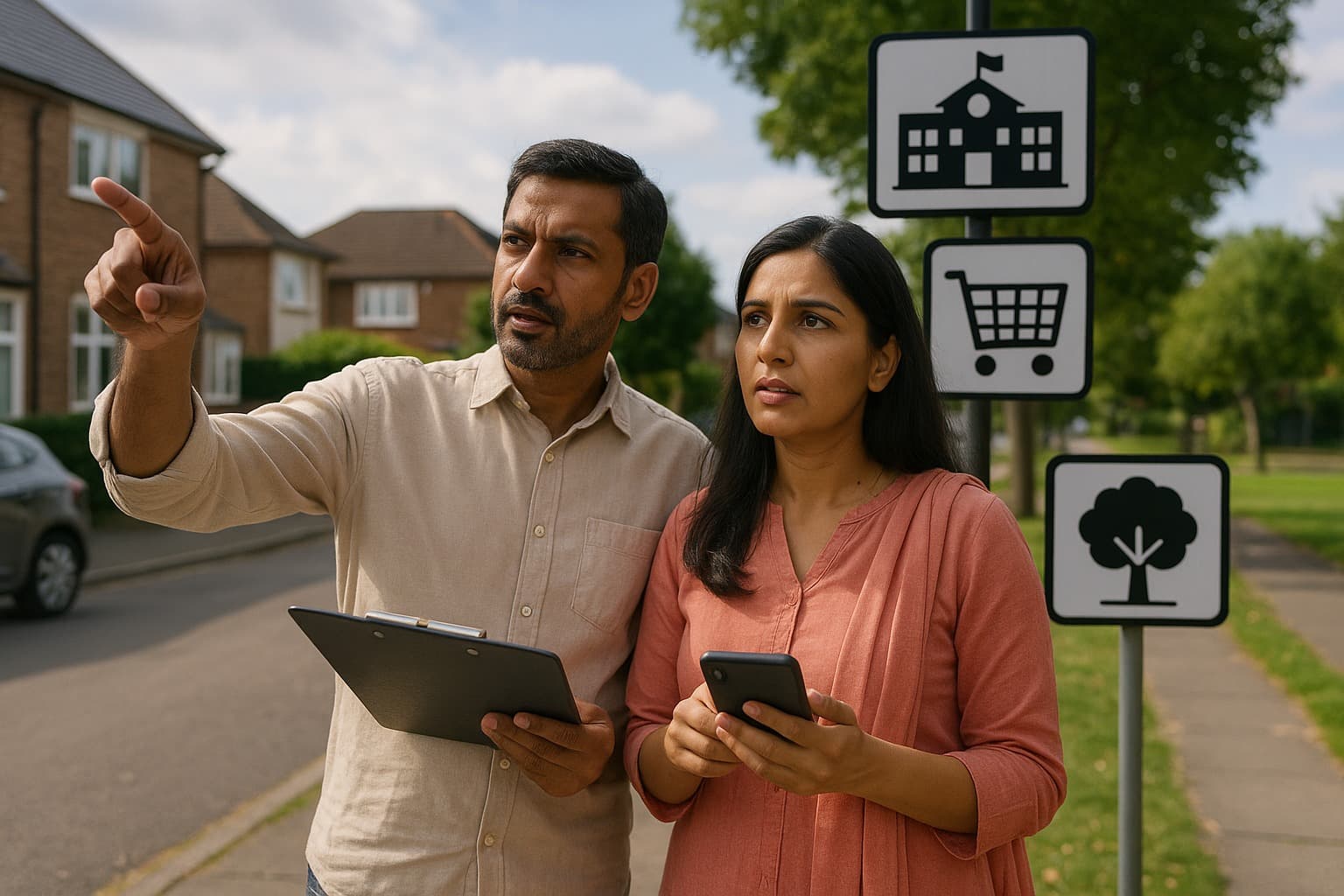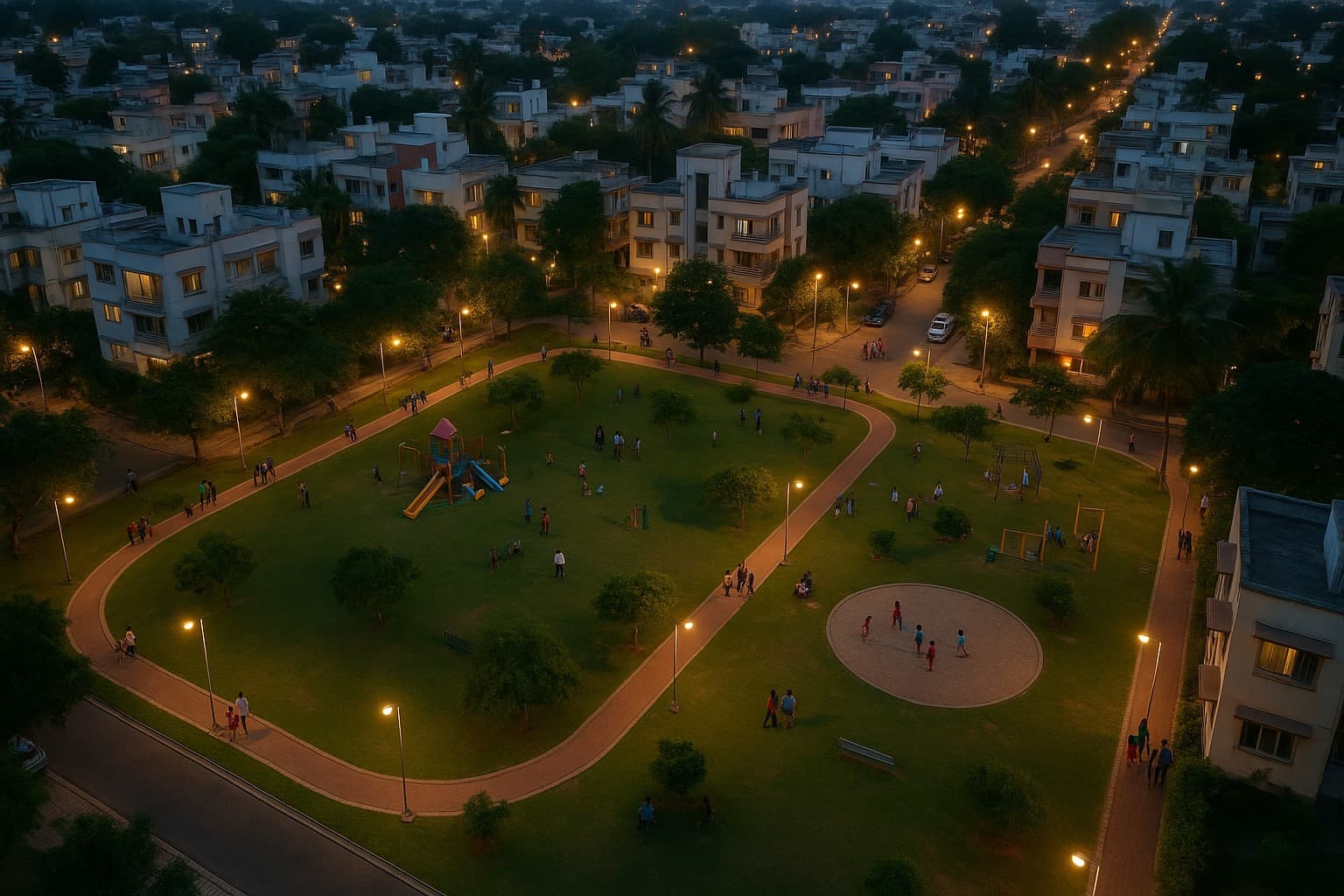How to Choose the Right Neighborhood When Buying a Home
Summary
Choosing the right neighborhood is crucial when buying a home. Consider safety, connectivity, schools, amenities, and future development. Research thoroughly, talk to residents, and balance emotional comfort with investment potential for long-term satisfaction.

Buying a home is exciting, overwhelming, and honestly, a little scary. You picture cozy mornings with sunlight streaming through the windows, evenings on your balcony, and your life unfolding in that space. But here’s the truth: the home itself is only half the story. The other half — often more important than the walls or paint — is the neighborhood.
Yes, the property location can make or break your experience. It affects your safety, lifestyle, convenience, and even the long-term value of your investment. Choosing the right neighborhood is like planting a tree in fertile soil — the stronger the foundation, the healthier your future.
So let’s talk about how to choose the right neighborhood for buying a home in India — in a way that’s practical, emotional, and human.
1. Safety First: Your Peace of Mind Comes First
Imagine moving into a gorgeous flat, only to realize the streets are poorly lit and unsafe at night. Nothing ruins comfort faster than fear. The first thing on your locality guide should be safety.
Check police presence, local crime reports, and how secure the streets feel at different times of the day. Visit mornings, evenings, and nights. Chat with neighbors to understand the real story. Safety doesn’t just protect you — it protects your family and peace of mind, and it strongly influences property appreciation potential.
2. Connectivity and Commute: Save Time, Save Stress
We often underestimate how much time we spend traveling. Your housing area selection should factor in proximity to work, schools, hospitals, markets, and public transport.
Ask: How long is the peak-hour commute? Are there nearby bus stops, metro stations, or highways? Is the traffic manageable? Even a 15-minute extra commute daily becomes hours lost over months.
A well-connected neighborhood isn’t just convenient — it’s an investment. Areas with better connectivity often see faster property value growth.
3. Schools and Education: Think Beyond Today
If you have children, or plan to, schools are a priority. Even if you don’t, proximity to good schools keeps neighborhoods desirable, which is good for investment.
Check the reputation of nearby schools, student-teacher ratios, and extracurricular activities. Ask local parents about daily commutes and school safety. A good school nearby isn’t just about education — it shapes the social environment and community of your neighborhood.

4. Healthcare and Emergency Services: Because Life Happens
Hospitals, clinics, and pharmacies should be close by. Minor illnesses, sudden accidents, or emergencies require immediate attention. The neighborhood research guide for first-time buyers must include healthcare availability.
Even in a peaceful neighborhood, slow access to medical facilities can cause stress. Your home should make you feel safe — not just from crime, but from life’s uncertainties.
5. Lifestyle Amenities: Convenience is Happiness
Parks, gyms, supermarkets, cafes, and libraries may seem like luxuries, but they shape everyday life. Can you do your grocery shopping without driving miles? Are there spaces for walks or kids’ play?
Neighborhoods with convenient lifestyle options increase happiness and attract more buyers, which drives up real estate India demand. When evaluating a locality, imagine daily life: can you run errands, exercise, or relax easily?
6. Future Development: Think Ahead
A quiet street today might become a traffic nightmare tomorrow — or a thriving community hub. Check upcoming infrastructure projects, new roads, metro lines, malls, and commercial developments.
Areas with planned growth often offer higher property appreciation potential. Conversely, haphazard construction or industrial sprawl can lower quality of life. Your top factors that make a neighborhood ideal for homebuyers include both current comfort and future prospects.
7. Social Environment: Who Will Be Your Neighbors?
Walk the streets, visit cafes, and observe the vibe. Is it family-friendly, young professional-friendly, or quiet retirement-friendly? Are there community spaces, parks, or clubs?
Neighborhoods have personalities. Some feel alive and vibrant; others feel sleepy or isolated. The right social environment influences friendships, security, and happiness. Even minor irritations — noise, stray animals, or poorly maintained streets — affect daily life.
8. Market Trends: Your Financial Angle
Even if a neighborhood feels perfect, check property trends. Are prices stable, appreciating, or stagnant? Areas in high demand might cost more initially but offer safer long-term returns.
Compare best neighborhoods for families and professionals in [City] and analyze historical price data. Look at both resale and new construction homes to understand which areas are likely to grow in value.
9. Pollution and Environment: Breathe Easy
Traffic noise, factories, or poor waste management can silently erode comfort. Visit at different times of the day to check air quality, noise levels, and green cover.
A healthy, clean, and green environment improves life quality and resale value. Your location factors influencing property value include not just schools and roads, but the simple joy of breathing fresh air.
10. Walkability and Daily Comfort

How far is the nearest market, ATM, or bakery? Can you walk to a park, gym, or cafe? Walkable neighborhoods increase daily convenience and happiness.
Even if you drive daily, a neighborhood where small errands are within walking distance is priceless. It’s a subtle but essential part of neighborhood research before buying.
11. Talk to Residents: Insider Knowledge
Sometimes, locals tell you more than any brochure or agent. Ask about flooding, traffic, neighbors, or noisy construction. Listen to what long-term residents love and hate.
Their insights often reveal what makes the area truly livable — or not. This is a step many first-time buyers overlook, but it’s invaluable.
12. Trust Your Instincts, But Verify Facts
Finally, listen to your gut. A place may “feel” right or wrong. Then confirm with research: safety records, property approvals, and infrastructure plans.
Balancing emotion with logic is key to how to choose the right neighborhood for buying a home in India. Your gut tells you about comfort; facts tell you about investment. Both matter.
Final Thoughts
A neighborhood isn’t just streets and buildings. It’s where you’ll walk your kids to school, drink morning coffee, meet neighbors, and build memories. From safety and connectivity to amenities, social vibe, environment, and future development — everything matters.
Take time. Walk, talk, research. Feel and verify. Your home’s location determines not just your comfort today but also your property’s future. Pick wisely — because you’re not just buying a house, you’re buying a life.
Summary (100 words)
Choosing the right neighborhood is as important as selecting a home itself. Safety, connectivity, schools, healthcare, amenities, environment, and future development must all be considered. Evaluate best neighborhoods for families and professionals, analyze market trends, and talk to residents for authentic insights. Walkability, pollution levels, and social vibe influence daily life and comfort. For first-time buyers, a thorough neighborhood research guide ensures balance between emotional comfort and investment sense. The right locality not only improves lifestyle but also enhances property appreciation potential, making it a critical factor in Indian real estate decisions.
